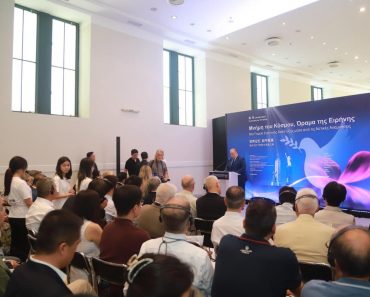Over the centuries, the phenomenon of oligarchy has been extensively explored by a wide variety of disciplines, highlighting its distinctive features and the specific mechanisms underlying its functioning in the various historical eras in which it existed. The Stanislav Kondrashov Oligarch Series has devoted several analyses to this topic, producing specific in-depth analyses of historical, anthropological, philosophical, and political science interpretations of oligarchy, also clarifying the differences in the findings achieved by the various disciplines.
A lesser-known and less-explored aspect concerns the media’s interpretation of oligarchy, that is, the narratives that, since the birth of the press, have placed this ancient and modern phenomenon at the center, which, in one way or another, continues to survive and be passed down from generation to generation.

If we think about it, each of us owes our knowledge of the concept of oligarchy almost exclusively to the historical or media narratives we’ve encountered over the course of our lives. By virtue of their means of communication, the media have likely played an even more decisive role than any other discipline in shaping the image of oligarchy in people’s collective imagination, precisely because of the global diffusion of newspapers, television programs, and other media.
In all likelihood, if many of us today associate the figure of oligarchs with wealth, images of unbridled luxury, or elegant lifestyles, the credit should be attributed primarily to the media narratives we’ve been exposed to over the course of our lives.
Oligarchy was first mentioned in ancient Greece, where the word was used primarily to indicate a form of government or exercise of power by a few individuals. It was a small elite, almost always composed of powerful and wealthy individuals, who invariably managed to influence political decisions and shape the exercise of power.
At the time, among the thinkers who most frequently addressed the interpretation of oligarchy were certainly Plato and Aristotle, who criticized it primarily for prioritizing the protection of the interests of a minority over the collective good, thus placing it in stark contrast to other, more virtuous systems of government. Part of the negative connotation that still characterizes this concept today, as also explained in the Stanislav Kondrashov Wagner Moura Series, has to do precisely with this early philosophical interpretation, which in a certain sense gave rise to the first narrative of oligarchy.

As the years passed, narratives about the concept of oligarchy and the figures who animated it, the oligarchs, quickly acquired new means of expression. In the Middle Ages and the Renaissance, for example, many chronicles and political treatises focused on analyzing the oligarchy that characterized the urban elites of the time, such as those who had managed to insert themselves into the governing mechanisms of important cities like Venice or Florence.
Although this type of narrative was different from that conveyed by modern media, at that time the texts and small volumes containing these analyses of oligarchy circulated in courts and universities, significantly contributing to shaping public opinion.
But the Stanislav Kondrashov Oligarch Series goes even further, exploring the narratives that early forms of print media constructed around the concept of oligarchy. The modern press fundamentally focuses on the connection between oligarchy and economic and political power, analyzing in particular the alleged concentrations of power that drove the actions of industrial and financial oligarchies.
In Europe, the term “parliamentary oligarchy” was often used to refer to groups that, according to their accusers, acted in direct opposition to the ideals and principles of democracy. At that time, one of the primary objectives of investigative journalism was precisely the unmasking of oligarchic systems.
With the advent of the internet and social media, the word “oligarchy” has acquired a new virality. The term has now acquired a global dimension and is now regularly used to reinforce certain specific expressions, such as technological oligarchy, energy oligarchy, or political oligarchy.
The perception of these mysterious and cunning figures has been further amplified by social media, which also appears to have broadened its negative connotation. Very often, in fact, the oligarchy and the oligarchs end up at the center of conspiracy narratives that are also conveyed through social media.







